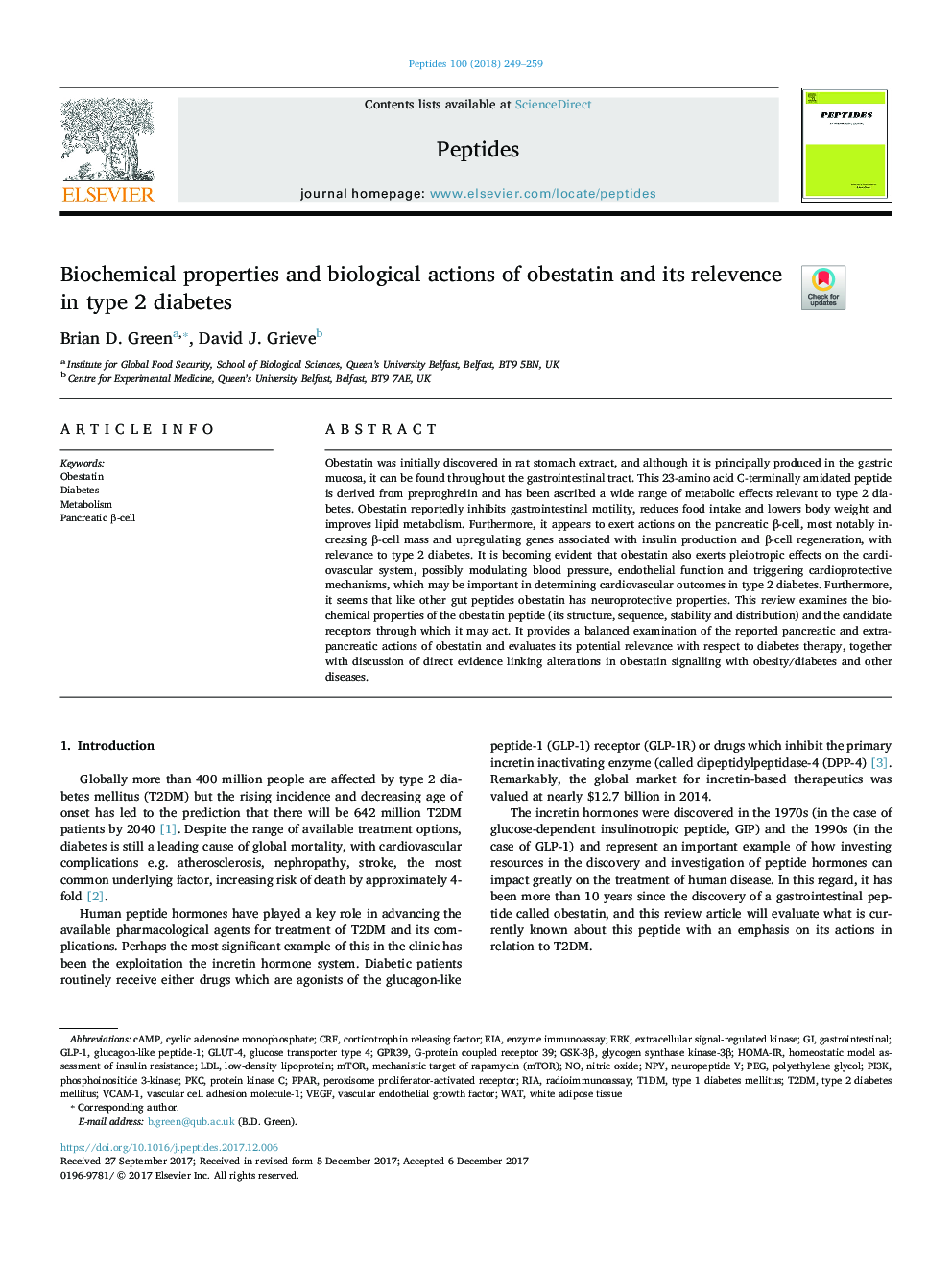| Article ID | Journal | Published Year | Pages | File Type |
|---|---|---|---|---|
| 8347523 | Peptides | 2018 | 11 Pages |
Abstract
Obestatin was initially discovered in rat stomach extract, and although it is principally produced in the gastric mucosa, it can be found throughout the gastrointestinal tract. This 23-amino acid C-terminally amidated peptide is derived from preproghrelin and has been ascribed a wide range of metabolic effects relevant to type 2 diabetes. Obestatin reportedly inhibits gastrointestinal motility, reduces food intake and lowers body weight and improves lipid metabolism. Furthermore, it appears to exert actions on the pancreatic β-cell, most notably increasing β-cell mass and upregulating genes associated with insulin production and β-cell regeneration, with relevance to type 2 diabetes. It is becoming evident that obestatin also exerts pleiotropic effects on the cardiovascular system, possibly modulating blood pressure, endothelial function and triggering cardioprotective mechanisms, which may be important in determining cardiovascular outcomes in type 2 diabetes. Furthermore, it seems that like other gut peptides obestatin has neuroprotective properties. This review examines the biochemical properties of the obestatin peptide (its structure, sequence, stability and distribution) and the candidate receptors through which it may act. It provides a balanced examination of the reported pancreatic and extrapancreatic actions of obestatin and evaluates its potential relevance with respect to diabetes therapy, together with discussion of direct evidence linking alterations in obestatin signalling with obesity/diabetes and other diseases.
Keywords
mTORCRFGSK-3βPPARRIANPYHOMA-IRERKGLP-1PKCGPR39T2DMT1DMVCAM-1Mechanistic target of rapamycin (mTOR)PI3KcAMPPancreatic β-cellCyclic adenosine monophosphateHomeostatic model assessment of insulin resistanceObestatinenzyme immunoassayEIAWhite adipose tissueDiabetesGastrointestinaltype 1 diabetes mellitusType 2 diabetes mellitusradioimmunoassaycorticotrophin releasing factorVascular endothelial growth factorVascular Endothelial Growth Factor (VEGF)phosphoinositide 3-kinaseLow-density lipoproteinLDLMetabolismvascular cell adhesion molecule-1Glucose transporter type 4Nitric oxideProtein kinase Cpolyethylene glycolPEGglucagon-like peptide-1WATextracellular signal-regulated kinaseGlut-4Glycogen synthase kinase-3βperoxisome proliferator-activated receptorNeuropeptide Y
Related Topics
Life Sciences
Biochemistry, Genetics and Molecular Biology
Biochemistry
Authors
Brian D. Green, David J. Grieve,
